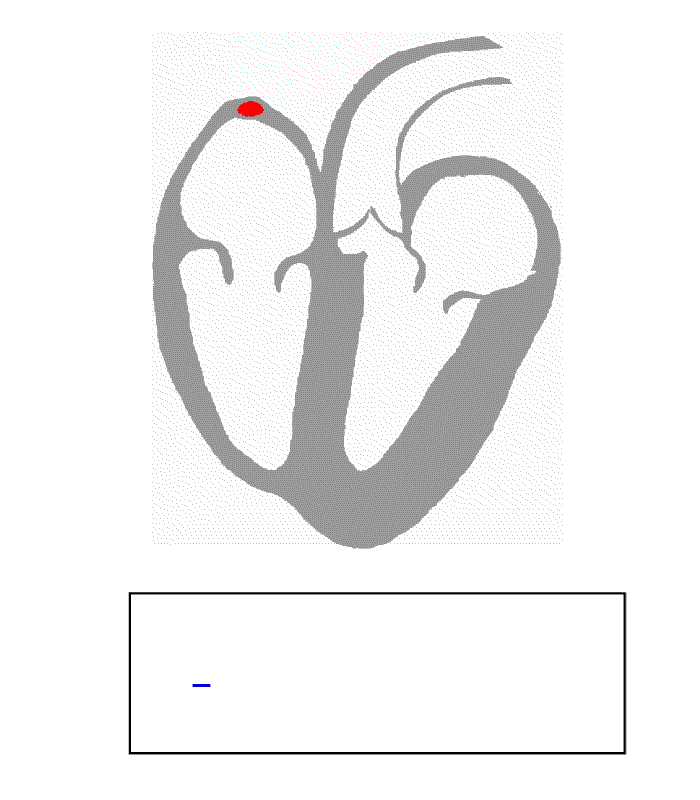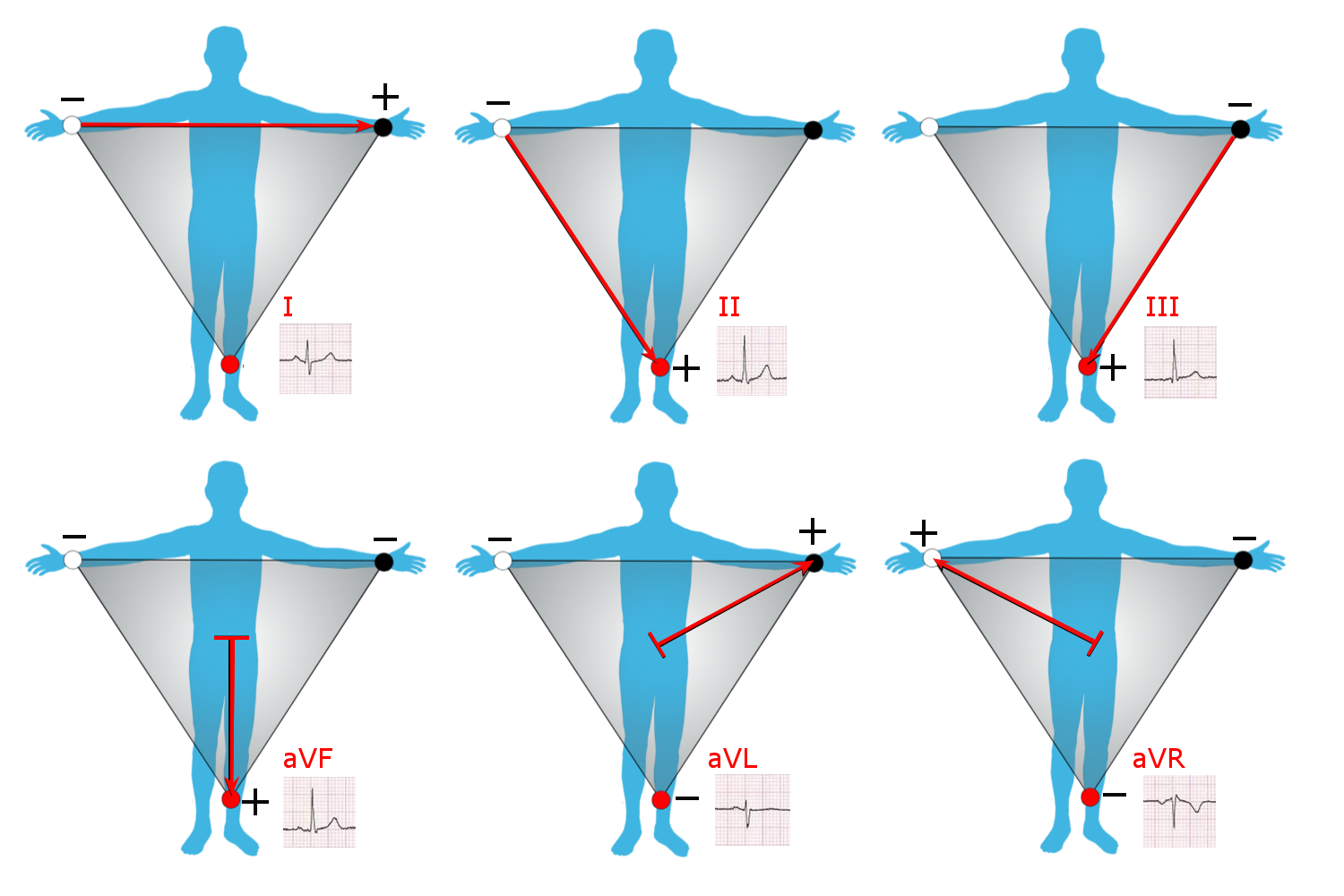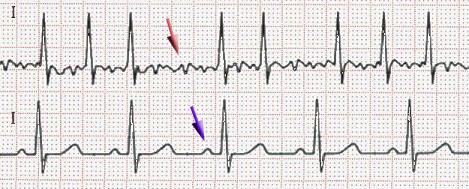I'm an emergency doctor, and I want to talk about the new Apple Watch electrocardiogram

Translation of a post with Reddit
I am an emergency doctor, and every day I have to read and interpret an electrocardiogram (ECG). I want to talk about the new Apple Watch function for ECG recording, since there are a lot of misunderstandings associated with it. This new Apple Watch feature is quite convenient, and for obvious reasons, many people are very happy about it, but it has its limitations.
')
I would also like to give a basic explanation of ECG technology.
Electrocardiography, or ECG
At its core, ECG measures the activity of the electrical potential in the heart. During the beating, the electrical potential moves through the heart, and this can be seen as bursts and bumps on the ECG.

To measure the potential, at least two electrodes are needed, with vectors directed across the heart. An ECG computer measures potentials and counts certain vectors, or “leads,” based on the orientation of the electrodes, and displays them as a strip of rhythms that looks something like this.

Some of the vectors are direct measurements of specific electrodes, others are computer-counted based on the readings of several electrodes.

The most comprehensive ECG is considered a cardiogram in 12 standard leads.

This ECG uses 10 electrodes: 4 for each of the limbs, and 6, located in a certain way around the heart. They give 12 separate leads all over the heart. In a sense, such an ECG can be imagined as a three-dimensional measurement of electrical cardiac activity.
Cardiomonitors used in hospitals typically use from 3 to 5 electrodes, which limits the number of measured leads, but still remains useful for diagnostic tests.
What is an ECG in Apple Watch?
The Apple Watch ECG is an ECG with a single sensor that measures lead I. This is great for measuring heart rate and rhythm, which can be useful for testing for atrial fibrillation .

The graph below is beautiful, regular, it can be traced P-wave , representing the atrial beats, which should be observed before each large burst. The upper graph shows the OP, the bursts are irregular, irregular, the P-wave is absent.
In the current version, Apple Watch will constantly monitor the heartbeat using an optical sensor, and if the watch detects an arrhythmia, they will issue a warning, after which the owner will be able to undergo an ECG examination.
Atrial fibrillation
Atrial fibrillation, or AF, is the most common type of cardiac arrhythmia, and 25% of people older than 40 years old should face at least one episode of AF. It occurs in case of interruption of the normal path of electrical activity.
AF can occur periodically, such episodes can last for several minutes, after which the heart can independently restore the rhythm. Some of these may occur due to alcohol use, illness, or other health problems. In some people, episodes of AF with subsequent self-healing rhythm can occur regularly, and the reasons for this are unknown - this condition is also known as paroxysmal form of AF. An extreme variant of such a state is a constantly present AF, at which it can be very difficult to return to a normal rhythm.
By itself, the presence of AF does not necessarily indicate a critical situation. Many people with AF do not have any symptoms at all, others may periodically experience an increase in pulse rate or irregularity.
The FP becomes dangerous when, against its background, there are deviations of vital indicators, when a person's pressure drops so much that he may lose consciousness, he may experience shortness of breath, or a dangerously high pulse. If your pulse exceeds 100–110 beats per minute, you experience tachysystole AF. At this point, emergency room doctors could monitor your pulse with intravenous medication.
And although brief periods of asymptomatic AF may not be dangerous, persistent AF increases the risk of heart attack, blood clots in the lungs, and cardiac arrest. Depending on the patient’s risk factors, some may require blood thinning. The longer your heart is in a state of uncontrolled AF, the harder it is to reverse heart changes.
What can not Apple Watch
- Currently, Apple Watch with ECG function is not designed to identify other heart problems other than AF.
- They are also not suitable for people who have already been diagnosed with AF - they need to regularly visit a doctor.
- They CANNOT accurately detect the risk of heart attack. Even a full 12-lead ECG can miss certain signs of heart attack.
- They are not considered a device approved by the US Food and Drug Administration (FDA). The FDA simply issues permits, “preliminary approval forms for 510k before a product enters the market,” in which it is unequivocally written that the device is not intended for people under 22 years of age. The device is considered a device for home use class II - this class includes condoms and pregnancy tests. [Last year, the FDA approved a special Apple Watch strap that measures heart performance, marking it as a medical accessory / approx. transl.]
- They are not a device to continuously monitor the electrical activity of the heart. They can track the ECG only when you touch the wheel with your second hand.
- It is physically impossible to build an ECG with a single electrode. To measure electrical activity, it is necessary to organize a closed loop passing through the heart. Even a wireless device that is worn on the other hand cannot cope with this, since it will not be part of the same circuit.
TLDR;
In general, the new Apple Watch looks like a great tool, but they do not belong to medical-grade devices and will not replace professional medical evaluation in case of symptoms. And even if the ECG on your Apple Watch looks normal, it does not mean that you do not have an AF or other cardiac abnormalities.
Source: https://habr.com/ru/post/423489/
All Articles